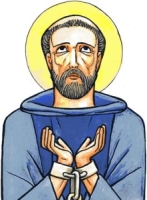
| 14 March |
• yesterday • tomorrow |
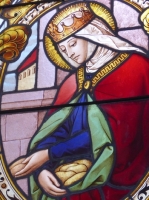
• Matilda of Ringelheim
• Matilda, Queen of Germany
• Mathilde, Mathildis, Maud
Daughter of Count Dietrich of Westphalia and Reinhild of Denmark; she was raised by her grandmother, abbess of the Eufurt. In 913, Matilda left the abbey, and married King Henry the Fowler of Saxony (Henry I), who had received an annulment from a previous marriage. Queen of Germany. Mother of Otto, Holy Roman Emperor; Henry the Quarrelsome, Duke of Bavaria; Saint Bruno the Great, Archbishop of Cologne, Germany; Gerberga, wife of King Louis IV of France; Hedwig, mother of Hugh Capet. Founded several Benedictine abbeys. Well known throughout the realm for her generosity, she taught the ignorant, comforted the sick, and visited prisoners. Betrayed by Otto after Henry's death when he falsely accused her of financial mismanagement.
c.895 at Engern, Westphalia, Germany
• 14 March 968 at Quedlinburg, Germany of natural causes
• buried in the monastery at Quedlinburg
• death of children
• disappointing children
• falsely accused people
• large families
• people ridiculed for their piety
• queens
• second marriages
• widows
• alms
• bag of money
• crown
• orb
• sceptre
• purse, indicative of her generosity
• queen with a whip
• queen holding a church
• medals and pendants: page 1,
page 2,
page 3,
page 4,
page 5,
page 6,
page 7,
page 8
• rosaries: page 1,
page 2,
page 3
• bracelets
• other jewelry
• books
https://catholicsaints.info/saint-matilda-of-saxony/

Lubinus, Lubin, Lubinius, Lumine, Leubinus, Loubin
9 September (translation of relics)/p>
Son of peasants, he was a field worker and shepherd in his youth. Thirsting for education, he went to the monastery at Noailles, France, working for the monks by day, being taught by them at night. He studied late by candle light, which annoyed the monks who had to wake for early prayers; Leobinus put a screen around the candle, and pressed on.
Friend of Saint Carilef. Student of Saint Avitus of Perche, who suggested that the young man join his monastery. Monk at Lyon, France. Captured by renegade soldiers during war between the Franks and Burgundians, Leobinus was tortured to make him give up the location of the monastery's treasure. He told the soldiers nothing, and they left him for dead, thinking they'd drowned him; he eventually recovered.
Joined Saint Avitus' community at Le Perche, France. Priest. Abbot at Brou, France. Bishop of Chartres, France. Noted reformer. Participant of the synod of Orleans in 549, and Paris in 552. Miracle worker; had the gift of healing, especially of dropsy or edema. Worked with Saint Caletric who gave him his last Communion, and succeeded him as bishop. Innkeepers and wine merchants near Chartres considered him their patron.
at Poitiers, France
14 March 558 following a lengthy illness
• against dropsy
• against edema
• against rheumatism
• innkeepers
• wine merchants
• with Saint Caletric
• in bed, receiving Communion from Saint Caletric
• studying in a field, often while watching sheep
https://catholicsaints.info/saint-leobinus-of-chartres/
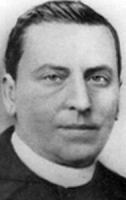
• Jacob Cusmano
• Jakob Cusmano
• Jacques Cusmano
Fourth of five children born to Giacomo and Magdalene Cusmano; his father worked as a surveyor, and the family was well-off financially. Giacomo's mother died of cholera when the boy was three. He was a pious child, eager for the religious instruction from his father, and showing concern for the poor; the family had to lock up clothes because he would give away thing in the closets to beggars. Educated at Jesuit schools. Physician, graduating from medical school in 1851. Taught at the medical school of the Royal University of Palermo. His father died in 1852, and Giacomo returned home to manage the family business and estate; he still managed to continue his education and become certified as a surgeon.
Feeling a call to religious vocation, he considered becoming a Capuchin friar, but his spiritual director recommended the priesthood. Ordained on 22 December 1860 in archdiocese of Palermo, Italy. Devoted to penance, he fasted often and would sleep on a cross. Along with about 40 of his parishioners, he founded the Missionary Servants of the Poor on 12 May 1867 and the Sisters Servants of the Poor.
15 March 1834 in Palermo, Italy
at 04:30am on 14 March 1888 in Palermo, Italy of natural causes following a severe bout of pleurisy
30 October 1983 by Pope John Paul II
https://catholicsaints.info/blessed-giacomo-cusmano/

• Arnold de'Cattanei
• Arnold Cattaneo
• Arnald, Arnaldo, Arnaud, Arnoldus
Born to the nobility. Benedictine monk at the Santa Giustina monastery in Padua, Italy. Chosen abbot in 1209 at age 24, he restored and expanded the abbey structure, and fought to maintain its rights. When Ezzelino III conquered Padua in 1237, Arnold escaped to Monselice. He returned in 1238, but when Ezzelino returned to the city, he arrested Arnold in 1246 and imprisoned him to live his remaining eight years on bread and water.
1185
• 10 February 1255 in the prison in Limena, Padua, Italy
• buried in the Franciscan church in Asolo, Italy
• returned to Padua and buried at the Santa Giustina monastery
• relics translated to a chapel in the basilica in Padua on 14 March 1562
https://catholicsaints.info/blessed-arnold-of-padua/
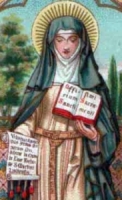
• Eve of Saint-Martin
• Eve of Mount Cornelius
• Eva, Evelyne, Heva
5 April with Blessed Juliana of Mont Cornillon
Born wealthy, she gave it up to become an anchoress at the church of Saint Martin in in Liège, Belgium. Friend of Blessed Juliana of Mont Cornillon, and continued her campaign to introduce the feast of Corpus Christi.
c.1205 in Liège, Belgium
• 1265 in Liège, Belgium of natural causes
• buried in the church of Saint Martin in Liège
• relics enshrined in 1542, 1622 and 1746
• relics currently enshrined in the Belgian cities of Ghent, Antwerp and Liège
1 May 1902 by Pope Leo XIII
https://catholicsaints.info/blessed-eve-of-liege/
Camaldolese monk. Abbot of the Cistercian monastery of Sant'Andrea near Sestri, Italy in 1110. Abbot of the Camaldolese monastery of San Stefano in Genoa, Italy in 1129; he served there for his remaining 37 years.
• 14 March 1166 at the San Stefano monastery in Genoa, Italy of natural causes
• body found incorrupt when inspected in 1282
He shone with every virtue, especially with a regular discipline, combined with a supreme vigilance and prudence.; and under him monks flourished in great repute of holy life. He had gloriously endured many labors for the decorum of monasticism; so it is no wonder that his life was celebrated beyond the worlds. – Giovanni Battista Semeria, "Christian Centuries of Liguria", 1843
https://catholicsaints.info/blessed-giovanni-of-genoa/
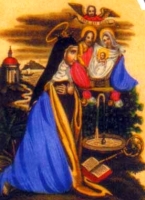
• Pauline of Hirsau
• Pauline of Münsterschwarzach
• Pauline of Fulda
• Pauline of Zell
• Paolina, Paulina
Born to the Saxon nobility. Married. Widow. Re-married to Sir Ulric de Scharaplan. Mother. Widowed again. Founded a double monastery in the Thuringian Forest and entered it as a nun.
14 March 1107 in Fulda, Germany of natural causes
https://catholicsaints.info/blessed-pauline-of-thuringia/

Lazzaro
11 February (Ambrosian Rite)
Archbishop of Milan, Italy c.439, a time when invading Ostrogoths controlled the area. May have developed and certainly popularized the Rogationtide litanies; originally devised to ask for protection from the Ostrogoths, over time the devotion spread throughout Europe. His February feast day is due to the Milanese custom of not celebrating saint days during Lent.
14 March 450
https://catholicsaints.info/saint-lazarus-of-milan/
Bishop of the diocese of Verona, Italy, serving in the mid-5th century.
• 14 March, year unknown
• buried in the church of San Stefano in Verona, Italy next to Saint Gaudentius of Verona
Of Saint Innocent, the confessor of Verona, and bishop of the same city (who greatly excelled in innocence, justice, and exceptional virtues; for in his knowledge of mild things, none of those who before him were bishops of the same church existed inferior). – from the Martyrology of Verona
https://catholicsaints.info/saint-innocent-of-verona/
Mid-8th century priest at the Basilica of the Holy Apostles in Constantinople. He helped steal the relics of Saint Luke and Saint Matthias, and an icon of the Madonna, to prevent their desecration, and hid them in the basilica of Santa Giustina in Padua, Italy.
• latter 8th century Genoa, Italy
• buried in the basilica of Santa Giustina in Genoa
• re-interred in the new basilica in 1502
• relics enshrined on 14 March 1562
• relics re-enshrined in 1999
https://catholicsaints.info/saint-urio-of-padua/
Alessandro, Alexandros
Priest in Pydna, Macedonia (in modern Greece). Martyr by Maximian Galerius for publicly refusing to sacrifice to idols.
• beheaded c.305 in Macedonia
• a fresh spring of water poured from the place of his execution
• buried in Thessalonica
• skull taken to the Great Lavra on Mount Athos in the mid 10th-century
leading four men in white clothing into heaven
https://catholicsaints.info/saint-alexander-of-pydna/
• Philip Longo
• Filippo...
On hearing of the work of Saint Francis of Assisi, he tracked down Francis and became one of the first twelve Franciscans. Known for his deep understanding of scripture. Served as the first confessor to the first Poor Clares, and travelled to preach with Saint Francis.
Turin, Italy
14 March 1246 in Perugia, Italy of natural causes
https://catholicsaints.info/blessed-philip-of-turin/
• Boniface Curitan of Ross
• Boniface Kyrin
• Boniface Kyrstin
• Boniface of Ross
• Kyrin, Kyrstin
Bishop of Ross, Scotland. Evangelized the Picts and Scots. Introduced Roman liturgy, observance and monastic discipline into the region. Found many churches in the northern British Isles.
may have been a Roman citizen
c.660
https://catholicsaints.info/saint-boniface-curitan/
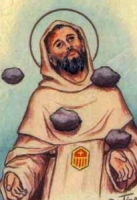
Tommaso
Mercedarian sent to Tunisia to redeem Christian prisoners. There he was imprisoned for five years before being executed. Martyr.
stoned to death while in prayer
https://catholicsaints.info/blessed-thomas-vives/
Married. Adult convert to Christianity. Bishop. Martyred by Arians.
• Agro Verano, Rome, Italy, date unknown
• tomb was discovered outside the walls of Rome in 1857
https://catholicsaints.info/saint-leo-of-the-agro-verano/
Two monks martyred by Lombards in Valeria, Italy who were never identified. After the monks were dead, their killers could still hear them singing psalms.
hanged on a tree in Valeria, Italy in the 5th century
https://catholicsaints.info/martyrs-of-valeria/
Eustathius
One of a group of Christians murdered for their faith in Mesopotamia after the conquest by Muslims. Martyr.
741
https://catholicsaints.info/saint-eutychius-of-mesopotamia/
Canon of the cathedral of Zaragoza, Spain. Franciscan Friar Minor. Missionary bishop of Morocco.
Zaragoza, Spain
1260 Zaragoza, Spain of natural causes
https://catholicsaints.info/blessed-agno-of-zaragoza/
Forty-seven people who were baptised into the faith in Rome, Italy by Saint Peter the Apostle, and were later martyred together during the persecutions of Nero.
martyred c.67 in Rome, Italy
https://catholicsaints.info/47-martyrs-of-rome/
Christian who refused to serve in the army as he believed the life of an imperial soldier was against the tenants of his faith, and was executed for his refusal. Martyr.
https://catholicsaints.info/saint-maximilian/
A 6th-century deacon in the Marsi region of Italy. Martyred by Lombards with two unnamed monks. His name has been lost, and over time his title was taken as his name.
https://catholicsaints.info/saint-diaconus/
Martyred in the 5th century by Arian Vandals in North Africa.
https://catholicsaints.info/saint-aphrodisius-of-africa/
Martyred in the 5th century by Arian Vandals in North Africa.
https://catholicsaints.info/saint-peter-of-africa/
Seventh century spiritual student of Saint Finbar at Lough Erc, Ireland. Founded a monastery.
https://catholicsaints.info/saint-talmach/
CatholicSaints.Info Portable Edition